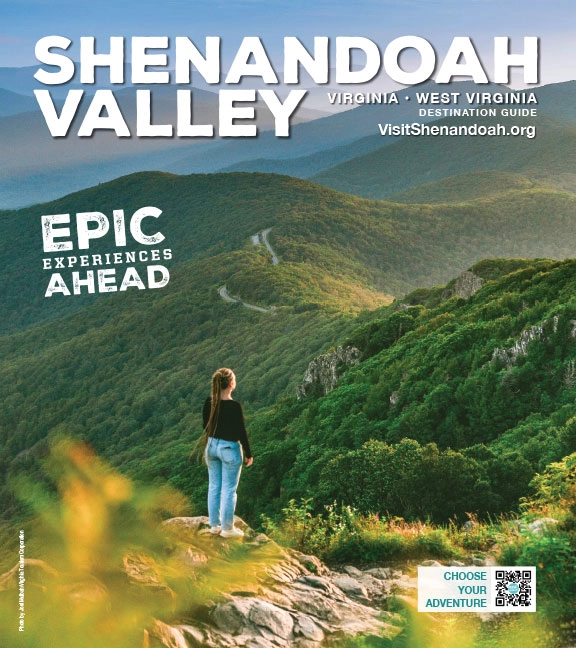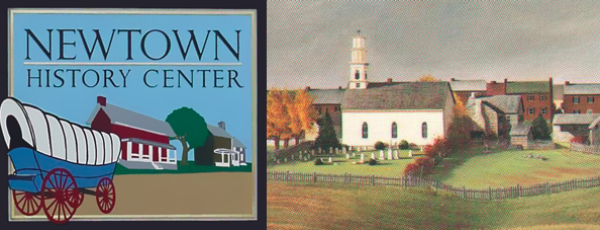Even the most casual student of American history is aware of the extensive Civil War action that took place throughout the Shenandoah Valley. But it would be a mistake to think historical wonders from other periods are not present in the Valley. From native American artifacts to colonial homes to World War II memorials, students of American history have a wealth of sites and museums to explore in the Shenandoah Valley.
To learn about some of the major Civil War sites, see the story we ran in October.
Listed below are some of the Valley’s important sites that focus on periods of history outside the Civil War.
Shenandoah National Park –While remnant stone fences and chimneys can be found along trails in the park, interpretive history of its inhabitants can be found at the Harry F. Byrd. Sr. Visitor Center, at milepost 51 on Skyline Drive. Exhibits, videos, a bookstore/gift shop, ranger programs and more help tell the story of the area as it changed from a mountain settlers’ homeland to a national park.
Luray/Page County –Luray Valley Museum/Car and Carriage Museum–When you visit Luray Caverns, the price of admission includes several other venues on the complex, including the Luray Valley Museum, where a collection of historic buildings has been restored to represent a small 19th century farming community. The main building displays decorative arts, items of clothing, early toys and artifacts of daily life from the 1750s to the 1920s. The adjacent Car and Carriage Museum is a rare look at America’s automotive history plus cars and carriages from other parts of the world. Learn more about both.
Shenandoah WWII Memorial–The small Town of Shenandoah in Page County is right on the Shenandoah River. They hold military service in high esteem here, as represented by their Veterans Park and days of activities around Memorial Day.
Blue Ridge Heritage Memorials—Ed Good Memorial Park in Stanley, just south of Luray, is a Blue Ridge Heritage Memorial site. At these sites, monuments are being erected in honor of local families who were displaced and resettled during the creation of Shenandoah National Park. Eight monuments are envisioned at completion.
Strasburg– Strasburg Museum— Celebrating 250 years of small town Valley life, this museum opened as a National Historic Landmark in 1970. Native American artifacts from the local area, a working model railroad of the 1930s, and Colonial and Victorian style rooms are among the sights. (Put this on your spring calendar as the museum is closed until May 1, 2018.)
Timberville– Plains District Memorial Museum—Railroading and farming were both major economic forces in the Valley’s history, and both are represented in this small museum in Timberville, about six miles west of New Market.
Harrisonburg— Virginia Quilt Museum—Quilts made in the 18th and 19th centuries up through the present day may be viewed, demonstrating practicality, craftsmanship and artistic flair. This unique museum also hosts special events, receptions and speakers, all centering around the magic of quilting. (Closed now; re-opening Feb. 20th.)
Staunton — Frontier Culture Museum—Tour 18th and 19th century American farms, as well as those of early Europeans and Africans. Walk through an early American schoolhouse. See living history demonstrations. Attend lectures, fairs, festivals, concerts and a long list of other special events. Take the kids to many programs for schoolchildren and toddlers. The Frontier Culture Museum is open seven days a week, 360 days each year. Hours vary by season.
Woodrow Wilson Library
Our 28th president was born in Staunton, and guided tours of his birthplace illuminate what life was like in the mid- to late 19 century. Don’t miss the President’s restored 1919 Pierce-Arrow limousine, or military memorabilia from WWI in the museum.
Lexington– In the George C. Marshall Museum and Library, watch an introductory video and tour four main areas covering the General’s life. From his early years in Uniontown, PA and at VMI, to his Army service before and during World War I, and through his World War II service and Nobel Prize in 1953, this remarkable patriot’s life is represented. Lectures, seminars and special events are held throughout much of the year.
Native American culture is preserved at Virginia’s Natural Bridge State Park. Natural Bridge and the Monacan Indian Nation of Virginia worked together to build a living history Native American Village complex. Visitors can step back in time to see what life was like in a typical Native American Village. Cedar Creek Trail leads from the bridge to the Monacan Indian Village and the 30-foot Lace Falls. The indoor part of the exhibit is open in winter; the outdoor village opens March 19th. Located south of Lexington, the park is easily accessible from I-81, exits 175 & 180, and the Blue Ridge Parkway.
Bedford — It surprises many visitors to find the D-Day Memorial in Bedford—but there is a compelling reason. Bedford lost more citizens (per capita) in the Normandy invasion, than any other American community. Nineteen soldiers from Bedford, whose population in 1944 was about 3,200, were killed on D-Day, and three others died later in the Normandy campaign. The 88-acre memorial sees about 55,000 visitors a year.
Thomas Jefferson’s Poplar Forest — Located between Bedford and Lynchburg, this historic octagonal home and beautiful plantation was built by President Thomas Jefferson as his personal retreat. He said of the site, ‘In point of soil, climate…and good neighborhood, I think it the finest part of Virginia.” Poplar Forest now allows visitors to see the restoration of the home’s interior and wings as well as archaeology in progress. At this time of year, Poplar Forest is open to the public on winter weekends, mid-January to mid-March. Hands-on activities available in the summer. Special events throughout the season, including Independence Day.
Find other historical sites in Bedford here.
Photo: Thomas Jefferson’s Poplar Forest





